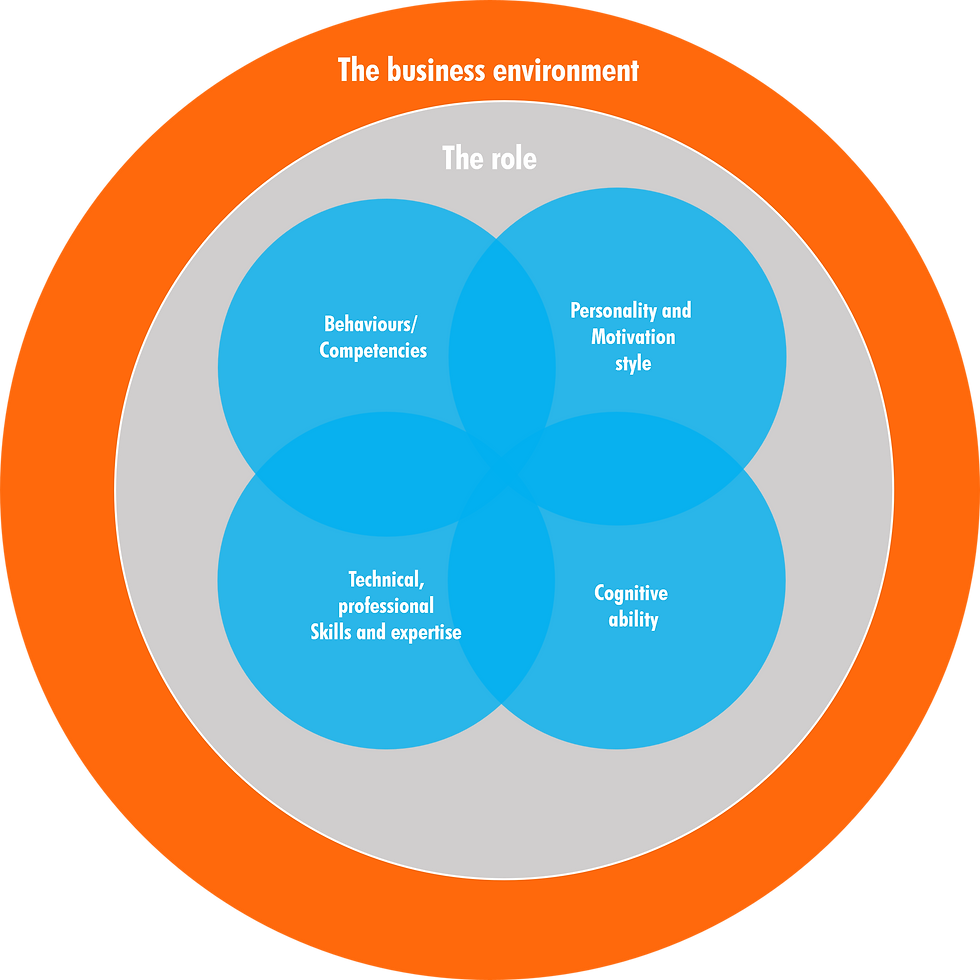How can learning agility transform your organisation?
- Abigail Clayton

- Apr 18, 2023
- 4 min read
Updated: Jun 7, 2023

Before considering the impact of learning agility on individuals and organisations, it’s important to understand what it is. Although there are varying definitions and components which make up learning agility, in essence it consists of a complex set of skills, behaviours and attributes that impact an individual’s ability to learn, adapt, unlearn, and relearn to keep up with constantly changing conditions.
The origins of the term can be traced back to Lombardo and Eichinger (2000) who defined it as:
“the willingness and ability to learn from experiences, and subsequently apply that learning in new situations to perform successfully under new or first-time situations.”
Since its first definition, many organisations have come to view learning agility as one of the most important factors in defining and selecting high-potential talent and future leaders.
It is something I am often asked if we can assess.
Currently there are a myriad of models, theories and factors such as the 9 dimensions, 3 components etc. around the topic but no one model stands out above the rest. When we are asked to assess learning agility, our approach is to start by defining the key elements of what learning agility means for the organisation and their people. This is supported by our detailed understanding of existing models and research through which we identify the traits, behaviours and abilities to be assessed for each particular client.
We regularly refer our clients back to our model of assessment which still holds true when considering learning agility – an individual’s attributes need to be viewed in the context of the role for which they are being recruited and the business environment in which they will be operating.

Within the tools we use, although there is no one set of traits that is universally associated with learning agility, some personality, motivational and behavioural traits that often feed into our assessment include:
Openness to experience: Individuals who are open to new ideas and experiences may be more likely to seek out new learning opportunities and adapt quickly to changing circumstances.
Emotional intelligence: The ability to understand and manage one's own emotions, as well as the emotions of others, can be an important component of learning agility as it allows individuals to build strong relationships and effectively navigate social situations.
Curiosity: Individuals who are curious and inquisitive may be more likely to seek out new information and be open to learning new things. Curiosity drives individuals to seek out new experiences and learn about new topics and ideas.
Resilience: The ability to bounce back from setbacks and persevere in the face of challenges can be an important aspect of learning agility, as it enables individuals to overcome obstacles and continue to grow and develop.
Creativity: The ability to think creatively and generate innovative solutions to problems can be a valuable asset in developing learning agility, as it allows individuals to approach new challenges with a fresh perspective and find unique ways to solve problems.
Intrinsic motivation: Individuals who are intrinsically motivated to learn, meaning they are driven by a natural curiosity and a desire to learn for its own sake, are more likely to seek out new experiences and be open to learning new things.
Growth mindset: A growth mindset is the belief that abilities and skills can be developed through hard work and dedication, rather than being fixed traits that are set in stone. Individuals with a growth mindset are more likely to embrace challenges, persist in the face of setbacks, and seek out new learning opportunities.
With the recent revalidation and updates to the Schroder model of high performance it is easy to see how these behaviours impact an individual's learning agility and their future potential.

Looking at the research in this area, you can see why it is a hot topic that we are so often asked if we can assess. Learning agility has been shown to have the following impact on an organisation:
Predict leadership success – both for individuals and organisations. Research has shown that leaders who score high on learning agility are more likely to be successful in their roles, better able to navigate change, solve complex problems and adapt to new situations. Research by
Korn Ferry identified that companies with leaders that demonstrate high learning agility produce 25% higher profit margins.
Be linked with high levels of engagement – research has shown that executives with high levels of learning agility are 5 x more likely to be highly engaged delivering the identified benefits of high engagement.
Be developable - learning agility is often mistakenly seen as an innate trait, however, research has shown that unlike IQ, leaning agility can be developed through coaching and training which is excellent news for aspiring leaders.
Correlate with career success - individuals who demonstrate learning agility are more likely to be successful in their careers. Those individuals with high learning agility have been shown to be promoted twice as fast as individuals with low learning agility. They are better able to adapt to changing job requirements, take on new challenges, and pursue career opportunities.
Can be a competitive advantage - In today's rapidly changing business environment, organisations that prioritise learning agility are better able to adapt and stay ahead of the competition. They are better able to innovate, respond to customer needs, and capitalise on new opportunities.
Learning agility is extremely important for leaders. So if you’re looking to identify and develop future leaders we’d be happy to help you find the right changemakers for your organisation. In the meantime if you are interested in learning more here are a selection of useful articles and research:




Comments